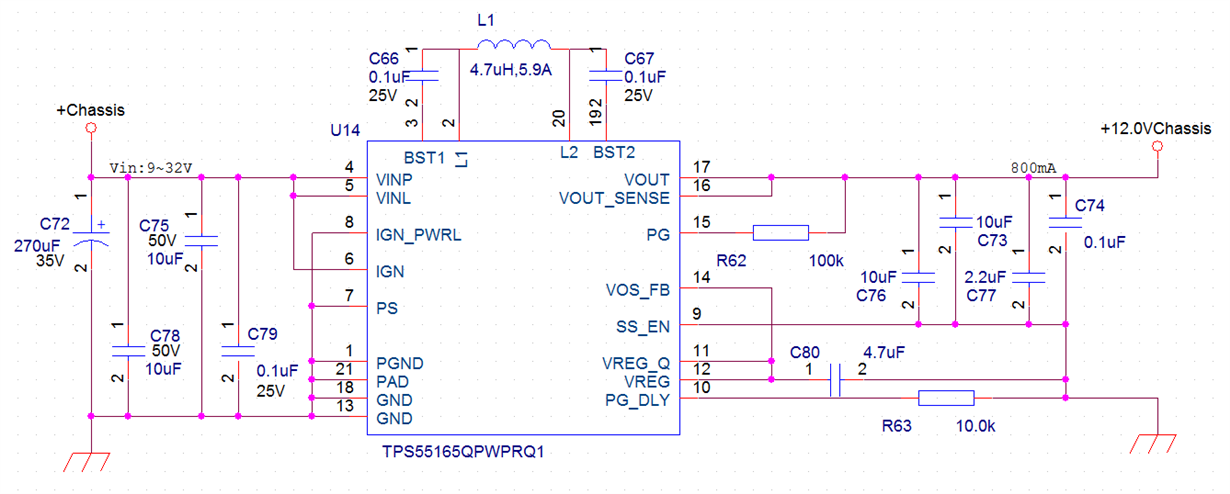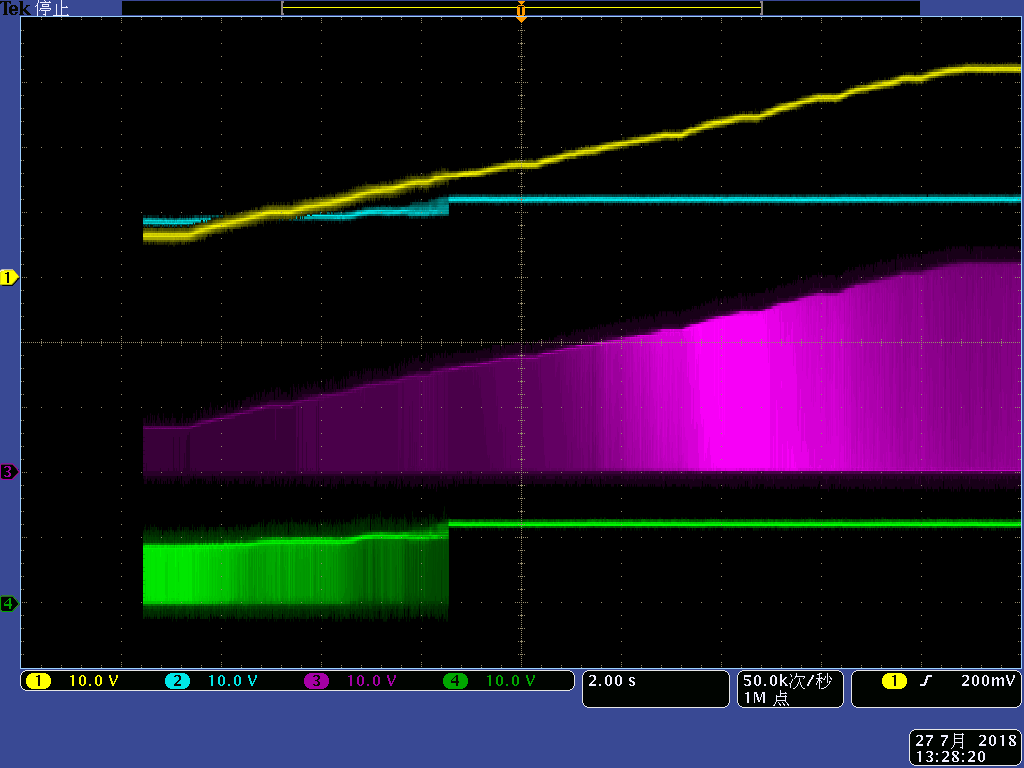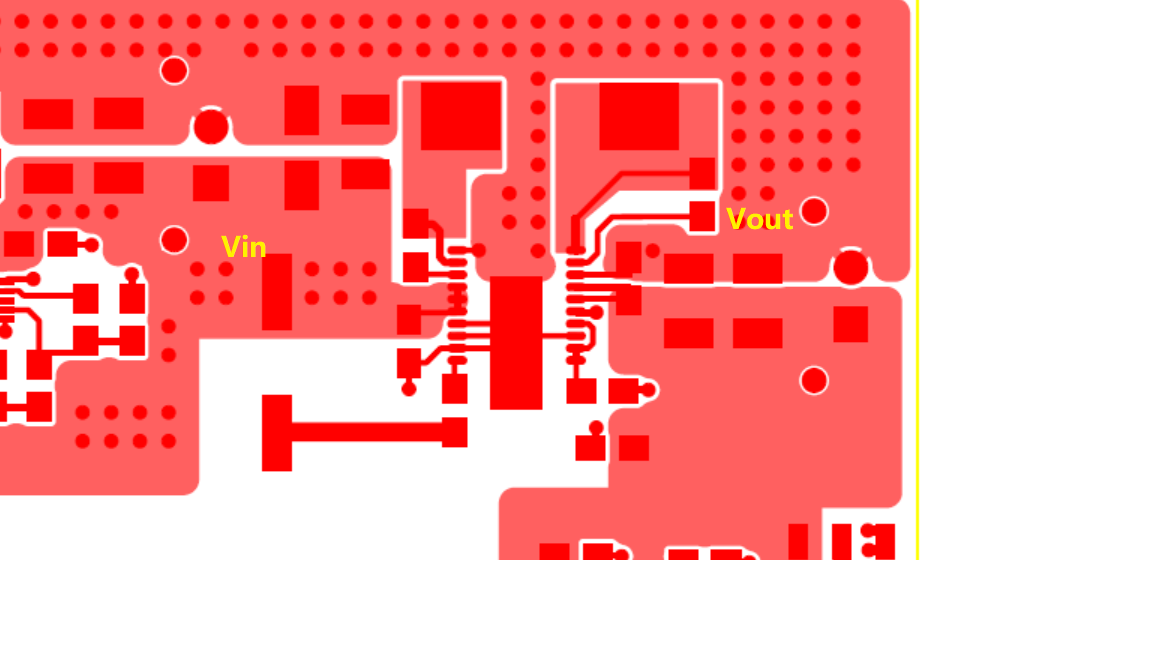Other Parts Discussed in Thread: TPS62160,
The design target of this non-isolated dc/dc is:
input : 8~32Vdc;
output: 12Vdc 800mA;
For the Same schematic, i have 3 PCBs in hand and only one of them do work well.
1. The demo PCB. Made it about half year ago to try this chip. This PCB is working well, can output over 950mA @ 12Vdc, (input:7~32Vdc);
2. The prototype of my Product. a little big different of PCB layout. Does not work, i have details below.
3. The compare/fix PCB. To make the prototype board work, made another small PCB just for this aux power supply to try to fix it. change a little bit of layout based on first demo PCB and example from Ti. Still not work.
The 2nd board test detail.
PCB layout.
it's a 6 layers PCB, and the layer next to the components is GND.
BOM
|
Reference |
NuGen Part Number |
Description |
Manufacturer |
Part Number |
|
C72 |
230-N277C350HYP-000 |
Capacitor, Hybrid Polymer, 270uF, 35Vdc |
United Chemi-Con |
HHXB350ARA271MJA0G |
|
C75 |
230-N106C500X7R1210 |
Capacitor, Ceramic, 10uF, 50V, 1210 |
|
|
|
C78 |
230-N106C500X7R1210 |
Capacitor, Ceramic, 10uF, 50V, 1210 |
|
|
|
C79 |
230-N104C250X7R0805 |
Capacitor, Ceramic 0.10uF, 25V, X7R, 0805 |
|
|
|
C66 |
230-N104C250X7R0805 |
Capacitor, Ceramic 0.10uF, 25V, X7R, 0805 |
|
|
|
C67 |
230-N104C250X7R0805 |
Capacitor, Ceramic 0.10uF, 25V, X7R, 0805 |
|
|
|
L1 |
230-001253-047 |
固定电感器 XAL5030 AEC-Q200 4.7 uH 20 % 5.9 A |
coilcraft |
XAL5030-472MEB |
|
R62 |
230-N1003R0805 |
Resistor,0805,100k,1% |
|
|
|
C76 |
230-N106C250X7R1206 |
多层陶瓷电容器MLCC - SMD/SMT 10uF 25V X7R 1206 |
|
|
|
C73 |
230-N106C250X7R1206 |
多层陶瓷电容器MLCC - SMD/SMT 10uF 25V X7R 1206 |
|
|
|
C77 |
230-N225C250X7R0805 |
多层陶瓷电容器MLCC - SMD/SMT 2.2uF 25V X7R 0805 |
|
|
|
C74 |
230-N104C250X7R0805 |
Capacitor, Ceramic 0.10uF, 25V, X7R, 0805 |
|
|
|
C80 |
230-N475C160X7R0805 |
Capacitor,Ceramic,4.7uF,16V,0805,X7R |
|
|
|
R63 |
230-N1002R0805 |
Resistor,0805,10k,1% |
|
|
|
U14 |
230-001251 |
开关稳压器 2~36vin, fixed 12vout 0.8A |
Texas Instruments |
TPS55165QPWPRQ1 |
Test Result:
@ no load.
the output Voltage is good for 8~32Vdc input.
@ 20ohm load(about 400mA )
Yellow:input Voltage Vdc;
Blue: output Voltage Vdc;
Violet: U14.2 Voltage The left(input) side of inductor
Green: U14.20 Voltage , The right(output) side of inductor
The pic below is noload
By Adding another 270uF HYP cap at output side can help a little bit of ripple, but does not make things working well.
See below
With additional 270uF HYP cap at output side, 20Ohm load.
3rd PCB.
trying to make as close as the Ti example, within 2 layers (1.6mm) , which is even worse than 2nd PCB.








